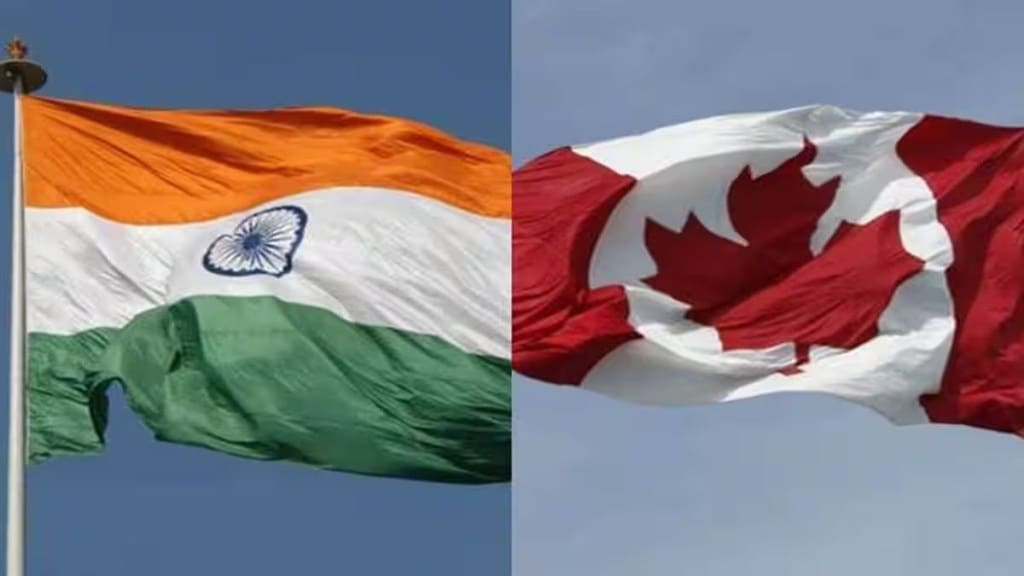By Anshumaan Mishra and Dr Aparaajita Pandey
Owing to the large Indian community in Canada, the two countries have become synonymous in popular culture. India and Canada have shared a deep diaspora link for decades and as the socio- political, and economic status of the Indian diaspora has grown in the past, the relations between the two countries have gone from strength to strength despite a few significant hurdles along the way. The Indian community in Canada has enjoyed burgeoning socio –political influence which is in part a result of the community constituting of largely law-abiding, peace-loving citizens, as well as the growth in their economic prowess. The community is now large enough to penetrate into the administration, law enforcement, security, and even the parliament of Canada. The 22 Indian-origin Members of Parliament (in the total strength of 338) in the House of Commons of Canada, is an example of the soft power of the Indian diaspora in the country. Also, since 2018, India has also been the largest source country for international students in Canada.
The above is not to say that the only link between India and Canada is that of Indian immigrants forming a substantial chunk of the Canadian population; the two countries also enjoy robust economic relations. India is Canada’s 11th largest export market and 12th largest trading partner. Bilateral trade of services between Canada and India increased almost 3.5 times between 2011 and 2020; in absolute terms trade has gone from 1.75 billion in 2011 to 5.50 billion in 2020. While these numbers might not be extravagant but for the scale of the two economies, they are quite promising. India is also among Canada’s biggest technological partners. In 2020, India ranked among the top ten import destinations of Canada in computer services (rank was 2nd), telecommunication (3rd), audio- visual services (4th) and travel services (7th).
The potential for these two nations to collaborate in the future and be better partners is not only potentially economically profitable, but also geopolitically beneficial for both Canada and India. Both have dedicated ambitious plans for the Indo-Pacific and are in principle on the same line to keep the Indo-Pacific free, open, and transparent to support their long-term growth and prosperity. Where India is in mission toward forming strong ties with Australia, UK and UAE, Canada has declared its new Indo pacific strategy for more deeper engagement with Indo Pacific, Canada’s traditional Atlanticist orientation and preference to ally with G7/OECD partners on strategic issues has left Ottawa with few partners among rising powers like India. It is, therefore, prudent for both India and Canada to combine their efforts and presence in the Indo- Pacific region, most prominently to counter China in the region.
China`s strong military presence in the region poses a significant challenge towards the aspiration of both countries. Moreover China`s foreign policy tools, use of financial enticement to export its economic model or the debt trap diplomacy, and its stranglehold over global supply chains can pose a challenge to both the countries. While geopolitics might not be a compelling reason for everyone, there are clear economic reasons for India and Canada to have better ties. Canada faces manpower shortages in sectors like IT and ITeS, healthcare, engineering, and education services, and the Indian workforce can help to mitigate the shortages. The cumulative FDI equity inflows from Canada, between April 2000 – December 2022, was $3,184.52 million (about $10 per person in the US). Canada ranks 19th among the source countries for investment into India, with a percentage share of only 0.51%. The top five sectors that attracted FDI equity inflows from Canada includes services sector (44.28%), drugs and pharmaceuticals (8.71%), trading (7.14%), computer software and hardware (6.94%) and food processing (2.64%). Further, Canada faces manpower shortages in sectors like IT and ITeS, healthcare, engineering, and education services, and the Indian workforce can help to mitigate the shortages. The removal of barriers to the mobility of skilled workers and professionals through proper collaboration between both nations can do wonders for Canada in its tussle fighting workman deficit.
India also has a lot to gain from this partnership. There is scope for India to attract FDI from Canada in manufacturing, finance and insurance services, transportation and warehousing, information and cultural industries and in the technology sector. With initiatives like production linked incentives in hand a lot of investment can be pulled from Canada by building strong alliances.
The infrastructure and transport sectors are vital areas of cooperation and investment. India’s ‘smart cities’ initiative provides immense opportunities for Canadian firms to undertake infrastructure projects in various Indian cities. Canada can also be an energy partner for India since India is an energy deficient country.
However, the rising sikh extremism in Canada is creating a trust deficit between India and Canada, if the two nations can find a way to work towards a joint solution to this problem, there is much for both to gain.
About the authors:
Anshumaan Mishra is an independent political analyst.
Dr Aparaajita Pandey is an Asst. Professor in Amity University, NOIDA and has a PhD from Jawaharlal Nehru University.
Disclaimer: Views expressed are personal and do not reflect the official position or policy of Financial Express Online. Reproducing this content without permission is prohibited.
